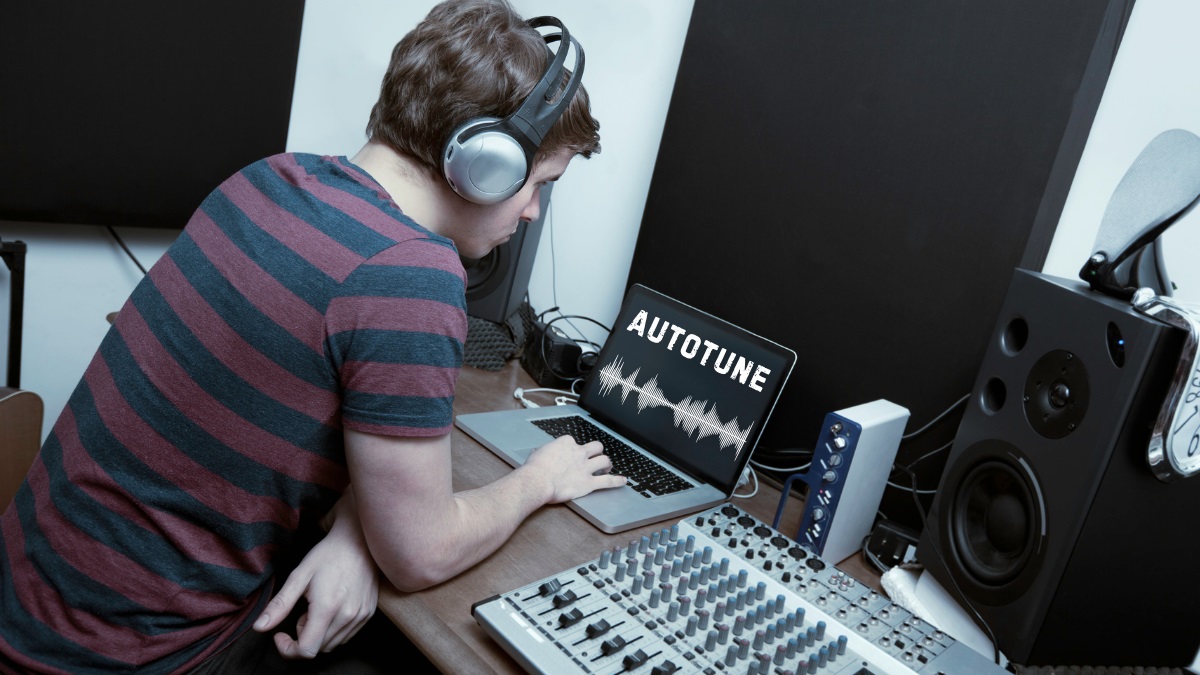Those who were old enough remember the first time we heard “Believe” by Cher in 1998.
In addition to her outstanding voice, there was a futurist effect that many audio lovers didn’t understand back then.
This song was the first to use autotune, an audio correcting software, to add special effects.
Fast forward a couple of decades, and it’s used today in almost 99% of the music produced.
So, what is autotune? Why do singers use it?
Keep on reading to learn more about it.
What Is Autotune?
Autotune is an audio processor that was developed in 1997 to correct off-key pitches in vocal and instrumental audio recordings.
Antares Audio Technologies released this audio software to measure and change pitch levels in music recordings.
The software’s initial purpose was to correct the wrong pitches, so music tracks can be in tune and sound perfect with no errors.
Today, autotune is still used to correct any wrong pitches, in addition to adding a special effect to songs.
How Has Autotune Developed and Evolved?
In 1997, Andy Hildebrand, a research engineer who specialized in signal processing, launched this processor after expanding on earlier attempts of using autocorrelation to correct the pitches in the human voice and instruments.
Hildebrand initially worked in the oil industry, and his work involved using sonar signals to locate underground oil deposits.
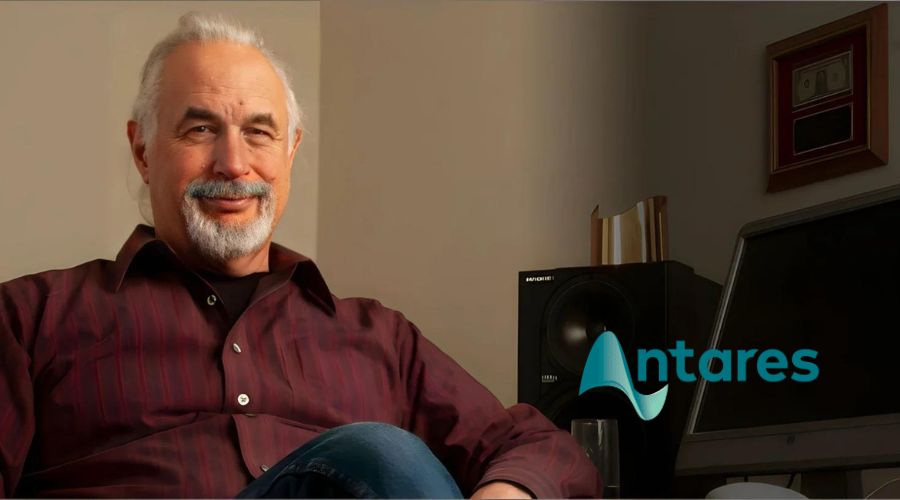
By the late 1980s, he decided to found Antares Audio Technologies to pursue his love for music, and combine his technical experience with his passion.
The idea of creating autotune came to Hildebrand when a friend’s wife claimed that she could use a device that would help her sing in tune, so he tried to work on the math to find a simple way to correct off-key pitches.
His goal was to design a solution that would make music more expressive, as he believed that when vocals and instruments were out of tune, the emotions of the musical performance were lost.
When music producers Brian Rawling and Mark Taylor were working on Cher’s “Believe,” they realized that tweaking the autotune settings would result in a robotic voice, which is contrary to the purpose it was used for.
Due to the song’s success, the audio effect was called the Cher effect.
The futuristic effect was later used in several songs to create a robotic, unnatural sound, mainly in hip hop, R&B, pop, electro, and trap songs.
“Boom Boom Pow” by the Black Eyed Peas and “Lollipop” by Lil Wayne are obvious examples of how this effect was quite popular in the 2000s.

The use of autotune began to spread in other parts of the world, especially in Northern Africa to create Raï music.
In 2009, Antares Auto Technology collaborated with rapper and producer T-Pain to create the “I Am T-Pain” app.
This app works on iOS devices, allowing users to create audio recordings with autotune.
Why Do Singers Use Autotune?
It’s hard to imagine today’s modern music without the use of autotune. So, why do singers and music producers actually use it?
Musicians can use and manipulate autotune for several purposes because no matter how talented the performer is, there’s always room for error.
Moreover, some audio effects are just impossible to create without audio software.
Here are some reasons why singers use autotune:
Quick Fix
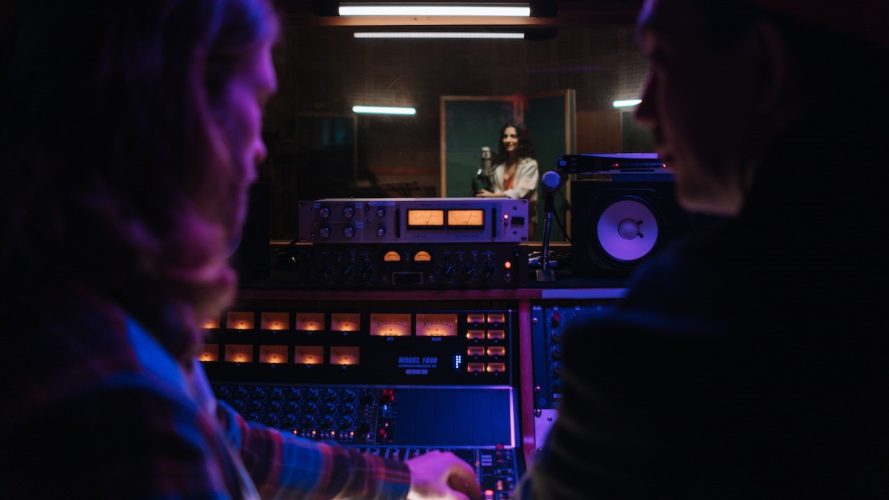
Using autotune, recorded audio can go from good to perfect in no time.
It can be used for a quick fix when one pitch goes off-key during a recording session, so the whole team doesn’t have to repeat the entire process.
Autotune is widely used by some of the biggest names in the industry, especially when a famous singer is on a tight schedule and doesn’t have time for several takes.
The audio engineer or music producer can apply the effect and fix any imperfections without messing up the essence of the performance.
Create a Vocal Effect
Some artists are pretty straightforward about using autotune as part of the song’s production and editing process.
However, others are subtle and even deny that they use it.
For example, Britney Spears denied using autotune in her famous song “Toxic,” but a new version with raw vocals was released and the difference was pretty obvious.
Other artists like Cher didn’t want the autotune effect to be removed from her 1998 hit “Believe.”
This song set its status as a stylistic vocal effect that would add a new dimension to the recorded audio.
Cher wasn’t the only one to use autotune as a vocal effect as it later became a go-to choice for most hip hop and pop artists.
Improve Live Performances
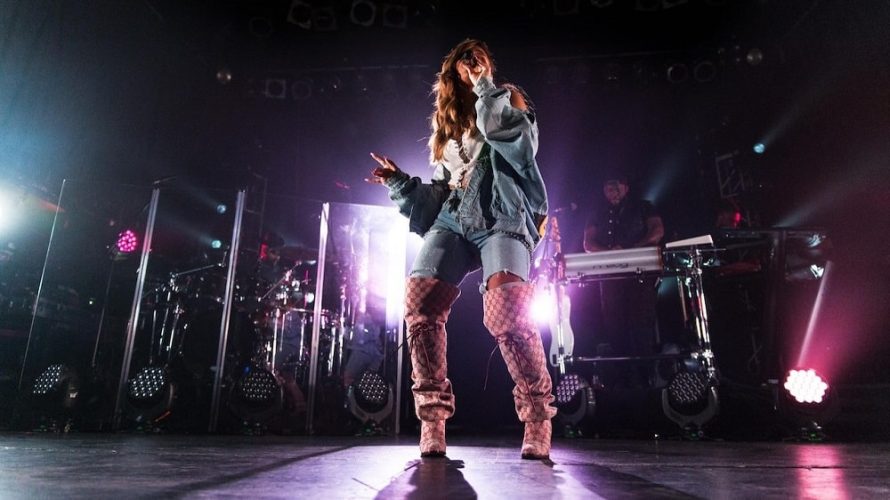
When a track is recorded in the studio, the artist and the music producer have time and space to repeat takes until they can reach the desired results.
However, such an opportunity isn’t accessible in live performances.
When performing live, singers might have to choose between lip-syncing to avoid mistakes or singing live, accepting any off-key pitches that might accidentally happen.
Both situations can lead to future problems that might affect the artist’s career for a long time.
For this reason, an audio engineer will work during a live performance to correct any mistakes that might affect the quality of produced audio.
Singers get affected by exhaustion and stress during live performances, so they can easily go off-tune.
After a long performance, they might also begin to lose the energy to sing with the same quality.
Autotune can help fix any problems with the vocals to produce clear and error-free audio.
The use can be subtle, so the live performance doesn’t sound like it has been heavily edited or processed.
Fix Poor Vocals

This reason is probably why some artists are against using autotune.
Because it can correct the off-key pitches, some singers can use it to mask their poor vocals, in live and studio recordings.
It can greatly enhance vocals and correct any errors, so it can basically make anyone sound like they have a good voice, even if they’re not.
This creates a debate about whether it should be used or not because no one can really tell if the vocals they hear are solely created by a talented artist or are digitally enhanced.
This is the reason why some artists publicly announced their hate for autotune because it blurs the lines between real and fake talent.
In 2009, Jay-Z released a song called “D.O.A” or Death of Autotune to announce that adding these enhancements isn’t like using the real human voice with all its imperfections.
Nevertheless, we still see multiple artists using autotune in different genres, and for various purposes.
There is even some news about the producers using autotune in talent shows like The Voice and American Idol to enhance the voices of contestants.
Teach Vocals
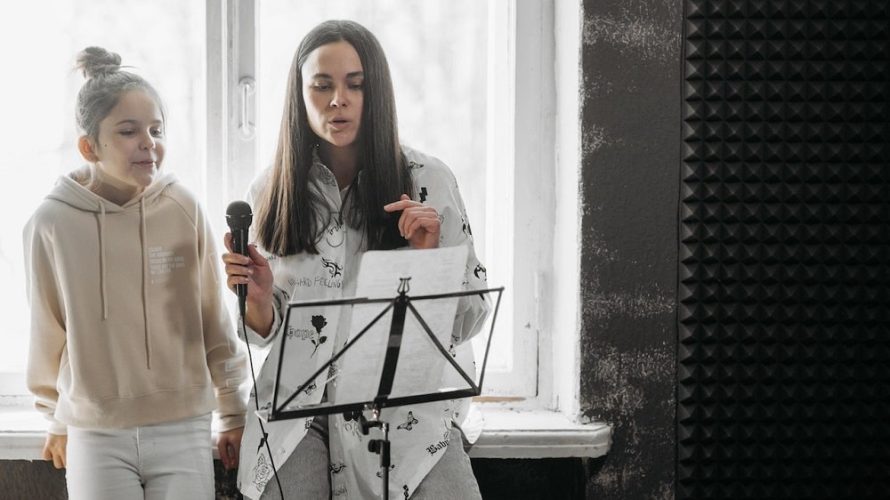
This reason is exclusive to vocal coaches and trainers.
Whether it’s during a talent show or a class, vocal coaches can use autotunes to teach students how to get the right pitches.
Having a beautiful voice isn’t enough to become a successful artist.
This is why even the most talented artists need proper and continuous training by reliable coaches who can teach them how to fix any mistakes to improve their singing style.
Using this software, a vocal teacher can highlight the off-key pitch, correct it, and play it for the student to see how the right pitch would sound.
This process can be a lot more challenging without the app.
Because it’s now accessible as a downloadable app, anyone can use autotune for teaching purposes.
How Can You Use Autotune?
Autotune is currently offered as a comprehensive audio processing solution with various plug-ins and settings that you can tweak to create the desired effect.
This is why both skill and experience are required to guarantee the best result while using the app.

This software might seem accessible, but this doesn’t mean that an amateur will be able to achieve the needed results while using it.
With practice, you’ll be able to use Autotune to highlight any vocal or instrumental pitch flaws and adjust them to make them sound perfect.
Here are the right steps to use it:
- Isolate the track that you want to fix. If you feel that you need to correct multiple tracks, you’ll have to use different instances of autotune for each individual track, as it can only handle one at a time.
- Autotune automatically detects the track’s key after analyzing it. You can also set it manually.
- Manipulate the retune speed to create the pitch of your choice. Increasing the retune speed means that the pitch will be almost perfect, which also makes it less human and less natural. Yet, this might be the desired effect, after all. For the most natural results, the speed shouldn’t exceed 80 milliseconds.
- Add the other effects based on your artistic vision. You can humanize the audio by making it more natural, even after correcting the pitch, or you can add a special effect to make the audio futuristic, robotic, broken, or aggressive.
How Can You Tell That a Voice Has Been Autotuned?
We mentioned that some artists like Cher and T-Pain are never ashamed of admitting the use of autotune to enhance and alter their voices.

However, some artists are still discrete about it.
As a result, you might be interested in hearing someone during a live performance, only to find out that they sound nothing like the recorded song you’ve been listening to for months unless they’re actually using autotune during their live performances.
So, if you’re confused about whether a specific voice has been autotuned or not, here are some tips to help you decide:
Robotic Vocal
The easiest and probably first sign to notice when a song is autotuned is the robotic voice you hear, especially towards the ends of sentences.
This is a classic autotune effect that you can hear in some of the famous songs that publicly used autotune like T-Pain songs and “Boom Boom Pow” by the Black Eyed Peas.
In these songs, autotune isn’t subtly used, as the producer is using it to add this robotic effect on purpose.
Special Effect
This is another sign to look out for when you’re listening to a song.
Autotune can literally change how someone sounds, and the difference will be quite obvious, especially if they’re not using it in live performances.
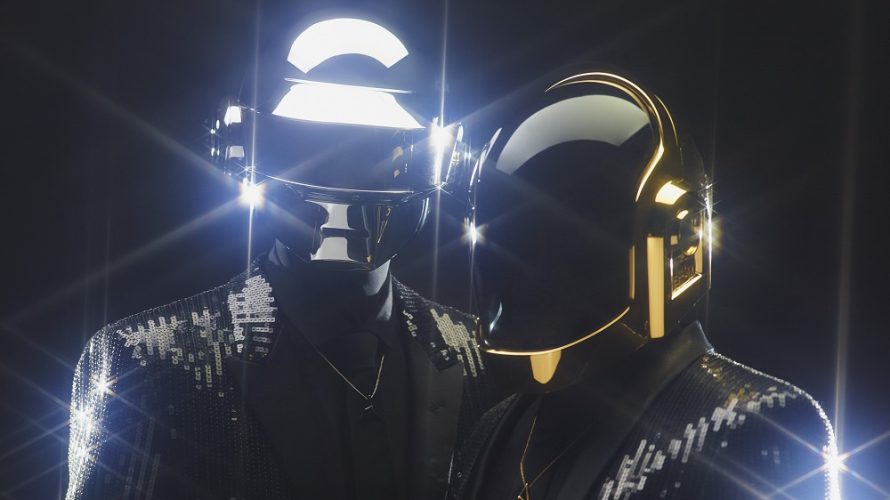
Some musicians like Cher and Daft Punk used autotune to change their vocals completely, instead of only fixing the off-key pitches.
In electronic and hip hop genres, this is how most artists probably use it, and anyone can tell the difference between the autotuned song versus the one without autotune.
No Emotions
When humans sing, their voice fluctuates because of their emotions.
The breath someone takes and their exact emotions while pronouncing a specific word can make them sound a little bit off, but definitely more emotional.
If you feel that the song lacks the emotions and is too good to be true, it probably isn’t.
The use of autotune flattens out the pitch, sucking the emotion out of every note.
Moreover, the heavy use of autotune can even make the lyrics a bit hard to understand. You might not be able to establish an emotional connection with them.
This tip might not always help you decide on the use of autotune, as some professionals are very good at manipulating it, so they’ll only use it light and subtly.
To the untrained ear, it might just sound like a very good song, and you won’t be able to tell that it has been autotuned.
In this live performance of “In a Manner of Speaking” by Nouvelle Vague, you can tell that autotune hasn’t been used.
Distortion Us Obvious
If you’re listening to a rock or a metal song and you can feel that the voice is unnaturally aggressive and rough, there’s a good chance it might have been autotuned.

Some rock and metal singers naturally have rough voices, while others might benefit from the little enhancement that autotune can provide.
The music producer will use autotune to tighten the transitions and add distortion to rough up the vocals.
Yet, the use of autotune in rock and metal genres remains to be limited. It’s widely used in other music genres, especially hip hop, R&B, and trap.
Vocals Are Tight
It’s natural for a human pitch to fluctuate, even minimally when holding a note.
So, if you feel that the vocals are tight and the pitch doesn’t fluctuate much or not at all, then the vocals have been autotuned.
In “The Way You Love Me” by Faith Hill, the singer didn’t use autotune to correct her own vocals, but she used it on the backing vocals.
The vocals were moving sharp between pitches and the addition of autotune made the whole vocal mix tighter, and a bit unnatural.
Which Songs Used Autotune Heavily?
We’ve mentioned that autotune can be used for multiple purposes, lightly or heavily, depending on the artist’s vision.
Yet, some songs stand as great examples of how this effect can be used to alter, and not just correct vocals and instruments.
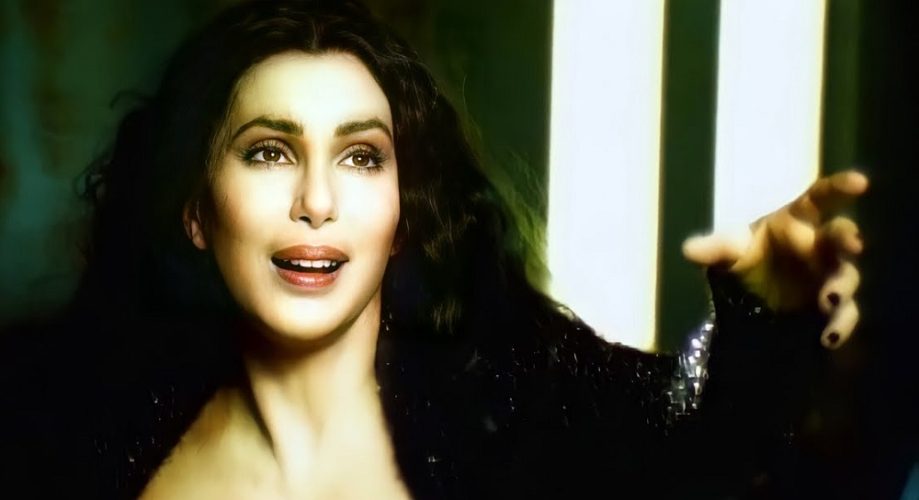
At the top of the list, comes “Believe” by Cher.
Not only was it the first time someone used autotune that heavily, but it was also publicly shared as the artist liked the effect and chose to retain it in the final version that was later released.
Here are some other songs where autotune was used for various purposes.
One More Time – Daft Punk
In this song, Daft Punk used autotune to totally transform the vocals, making them sound robotic and futuristic.
Opinions were polarized, as some people totally loved the effect of using autotune, while others hated it.
Daft Punk defended their choice by saying that the use of autotune is the future of music production.
It’s just like the use of synths when they were first introduced in pop music, as well as the integration of electric instruments like the electric guitar, which can provide a different range from the acoustic guitar.
Forever – Chris Brown

In this song, Chris Brown didn’t use autotune throughout the song.
However, he used it as a stylistic effect to show off the difference between vocals sung with and without it.
As we listen to the song, we can see the fluctuation between using autotune heavily and subtly to create various effects.
Disturbia – Rihanna
Rihanna used autotune to highlight the meaning behind the lyrics of her emotionally-charged song.
Autotune was used to add a disturbing effect to Rihanna’s rather soft and calm voice to match the disturbing meaning of the words.
In this song, autotune is heavily used on the singer’s vocals as well as the backing vocals.
In some instances, we can hear the effect in the middle of the phrase as the voice breaks, or towards the end of the words.
Womanizer – Britney Spears

Britney Spears was repeatedly accused of using autotune to mask her vocal inability, especially when she previously denied using this audio processor in other songs like “Toxic.”
However, in “Womanizer” the effect is pretty obvious.
Nevertheless, the release of a leaked version that was recorded in the studio revoked those claims.
The singer was able to sing impressively with raw vocals without any added effects.
It was clear that autotune was used in the song to add a special effect and not to mask poor performances.
Heartless – Kanye West
In this song, Kanye West used autotune to break his voice to better express the lyrics.
Instead of adding a robotic and uplifting effect, West used the effect to show his grief and sadness.
For this song, T-Pain, the autotune expert, was consulted to make sure that autotune is used correctly.
The effect was used on the singer’s vocals as well as the backing vocals.
Tik Tok – Kesha

This song put Kesha under the spotlight but also gave some people the impression that she didn’t have strong vocals, a claim that she later proved false.
However, in this song, autotune is used extensively to create a robotic and happy feeling.
The lighthearted tunes and the autotune effect together make this a perfect song to dance to, which explains why it became one of the biggest party and club hits.
The effect of autotune is heightened with the combination of several electronics that were also incorporated in the audio production.
Is It Bad to Use Autotune?
Autotune isn’t bad, as its main job is to correct pitches and make audio productions sound more perfect.
Yet, the wrong use of autotune can have a negative effect on the music industry.
It’s natural for the human voice to show some pitch variations and these variations actually draw the line between natural and unnatural voices.
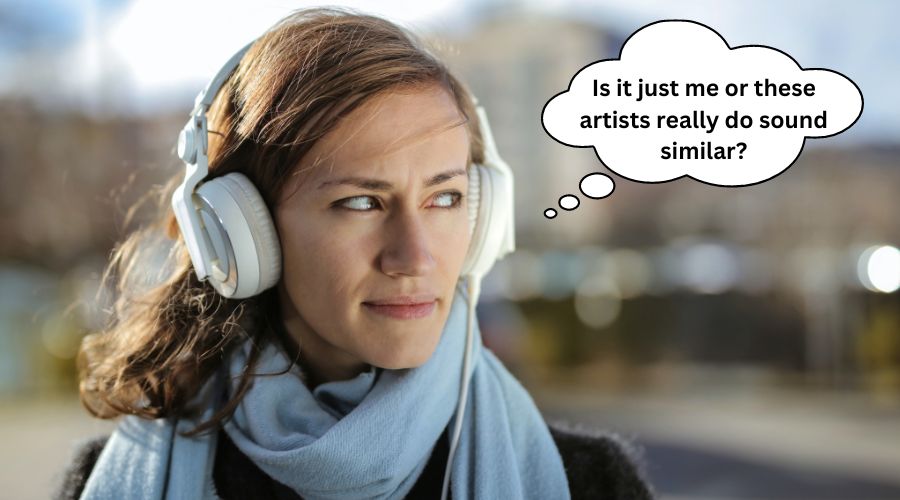
Using autotune heavily can result in several issues:
- The vocals can become unnaturally flawless. Erasing every mistake and making everything too good to be true will only result in a made-up music production that sounds nothing like the real thing.
- By blurring every breath and sigh, the vocals will lack emotions. These pauses are essential because they show the emotions of the artist while pronouncing different words.
- Because all mistakes can be easily tackled and fixed, artists and music producers can settle for less than accepted performances. They know that the app will be able to fix everything without having to work on later takes, so they won’t even try to improve their performances.
- Autotune can greatly disappoint the audience when they finally get to listen to their favorite artist in a live performance. Unless the artist is focusing on using autotune to adjust their live performances, their songs can sound extremely different from the recorded versions.
- Using autotune, different artists might end up sounding similar. In some cases, it’s the imperfections that give someone’s voice its special character.
- Aspiring artists can fall under the misconception of what a perfect vocal should sound like. What they perceive as flawless and perfect vocals will be a digitally enhanced version of natural vocals that are packed with flaws.
